The Effects Of Carbon Dioxide On Weather And Climate
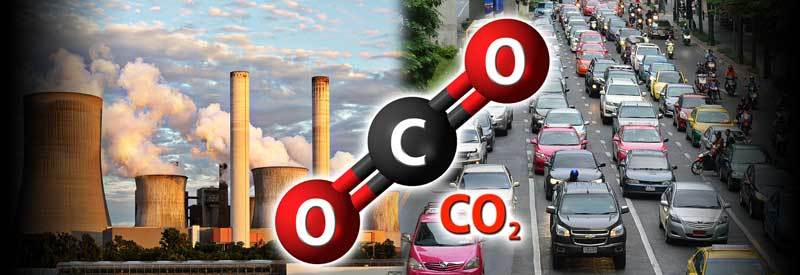
Many readers are familiar with carbon dioxide, mainly due to its negative association with Global Warming. We take a closer look at this gaseous substance and its impact on the weather and climate.
Carbon dioxide is a naturally occurring gas consisting of one part carbon and two parts oxygen. It is typically harmless and essential for oxygen production through photosynthesis. However, excess carbon dioxide due to fossil fuel emissions acts as a greenhouse gas contributing to Global Warming.
Carbon dioxide is a gas that has been in the atmosphere for thousands of years but has only been brought under the public's attention late in the 20th Century when the connection between fossil fuel emissions and Global Warming was made.
Yet, few of us really know what precisely carbon dioxide is, never mind the role it plays in our environment. The excerpt in this introduction already provided a brief description of what carbon dioxide is, but before delving deeper, one needs a more detailed definition.
What Is Carbon Dioxide?
Carbon dioxide is a naturally occurring gas consisting of one part carbon and two parts oxygen. It is typically harmless and essential for oxygen production through photosynthesis. However, excess carbon dioxide due to fossil fuel emissions acts as a greenhouse gas contributing to Global Warming.
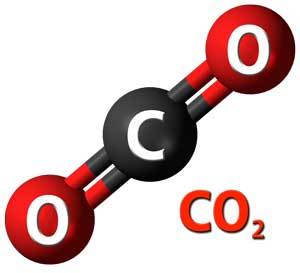
Carbon dioxide is essential for all life on earth. Luckily there is an abundance of it present in the atmosphere. Unfortunately, too much carbon dioxide has a damaging effect on both the climate (and weather) as well as our health.
As mentioned in the introduction, it is because of the alarming rate at which carbon dioxide is building up in the atmosphere and its harmful longterm effects, that we are so familiar with it in the first place.
Understanding the harmful effects of carbon dioxide is important for you to get a proper understanding of what "all the fuss is about" and why certain groups of people go to extremes to reduce the emissions of this greenhouse gas.
Therefore, shining a light on these harmful effects will be the focus of this article. To get a clear understanding of the negative impact of carbon dioxide buildup, we need to break it up into two sections:
- How carbon dioxide affects the climate and weather
- The effects of carbon dioxide on human health
Obviously, the emphasis will be on the impact of carbon dioxide on our climate and the weather. These changes in our environment alone will also have far-reaching effects on human health.
The direct effect of exposure to carbon dioxide on human and animal life will only serve to reinforce the severity of the impact of carbon dioxide buildup.
The Effect Of Carbon Dioxide On The Climate And Weather
There is a very fine balance between carbon dioxide (CO₂) and the atmosphere. If concentration levels of carbon dioxide become too high, like is currently the case, the impact on the atmosphere can be devastating.
And like meteorologists and climatologists have been warning and providing evidence for decades, it is the climate and weather that are being affected the most.
In short, the effects of carbon dioxide in the atmosphere are increasingly amplified as carbon dioxide concentration levels increase. This is directly reflected in our climate and weather.
Factors Responsible For The Increase In Carbon Dioxide
At this point, you may be wondering why carbon dioxide has been building up at such an alarming rate over the last century.
Carbon dioxide (CO₂) gets naturally produced through processes like human/animal respiration and volcanic eruptions.
Human activity, however, is the biggest contributor to the increased production of CO₂. This includes activities like deforestation, but especially the burning of fossil fuels (wood, coal, oil, and petroleum used in the transport industry, as well as heavy industries).
By looking at how it directly affects individual components of weather/climate, you will be able to get a clear and realistic view of the widespread impact raised levels of carbon dioxide have and how all these different components fit together to create a global crisis.
a) Carbon Dioxide And Global Warming
During the article's introduction, I already called carbon dioxide a greenhouse gas, but no further explanation was given as to what a greenhouse gas is.
First, if you don't already know this, let's quickly define what a greenhouse gas is. The name "greenhouse" refers to a building typically found in nurseries and other facilities where plants and trees are grown.
A greenhouse's main purpose is to regulate the inside temperature to promote plant growth, primarily through transparent roofs and sidewalls that allow direct sunlight in but trap the heat inside by blocking any openings to allow warm air to escape.
Carbon dioxide is called a greenhouse gas because it serves the same purpose of blocking warm air from escaping the earth's atmosphere. It accomplishes this through its ability to stay in the atmosphere on a semi-permanent basis and trap the warm air below.
Its semi-permanent attributes is a result of the ability of the structure of this gas to not get broken down by changes in temperature (on a physical or chemical level).
As a result, it makes it increasingly difficult for warm air to escape, causing the atmosphere as a whole to slowly warm up.
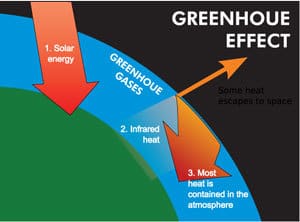
And this process is known as global warming, which is based on the same principle a greenhouse operates on. This also explains why global warming is often referred to as the greenhouse effect.
As the name suggests, the rise in temperatures occurs across the globe but is especially evident in the polar regions. Throughout the rest of the world, regional record-high temperatures are being recorded on an almost annual basis.
With the sheer amount of research done and mountains of scientific evidence presented to us over the last couple of decades, there is no denying it. Global warming is very real and continuing to pose an increased danger to all life on Earth.
And if, for some reason, you still question all evidence that the planet is warming at an alarming rate, consider the following small fact...
Since 1906, the global surface temperature increased by 0.9° Celsius (1.6° Fahrenheit). And if you think this is a small and insignificant number, you will be gravely mistaken.
The effects of Global Warming have very serious, long-term effects on climate and weather, as you are about to discover in the following sections.
b) Climate Change And It's Link To Carbon Dioxide
It is very common to mistake climate and weather. In short, climate represents weather patterns and tendencies established over decades or more, while weather portrays the atmospheric conditions you are experiencing at any specific time and what is forecasted for the immediate future.
You may still find it difficult to differentiate the two and need more clarification. You can read an in-depth article about the difference between climate and weather in this article.
When we look at climate change, however, this term encompasses more than just atmospheric conditions. Climate change also includes occurrences associated with weather/climate, like changes in the environment and behavior associated with it.

But for climate change to take place, especially at the alarming it is suggested, it relies on one critical factor, namely global warming. Without the consistent artificial heating of the planet, climate change simply won't be possible.
We already established that global warming is very real, and so is climate change. The evidence of climate change is all around us, from increased extreme weather events to droughts occurring worldwide.
Making a statement like this may sound like pointing out the obvious to many readers. To more critical readers, however, this may sound a bit like unsubstantiated claims.
Even though more evidence of climate change will be provided in upcoming sections, it's important to point out some key indicators to highlight the existence and impact of climate change...
1) Rising Sea Levels
Sea levels have been rising steadily for more than a century. This can be seen as a direct result of global warming. Since 1880, the global sea level has risen by about 23 cm (8 inches).
What is most unsettling, though, is the fact that 7.6 cm of this rise took place during the last 35 years! It means the rate at which these levels continue to rise is accelerating every year.
2) Extreme Weather Events
The increase in extreme weather events is becoming more evident with each passing year. We will cover these events in more detail in a later section, but here are just a few examples from 2018 alone.
- The highest temperature ever in Africa was recorded at 51° Celsius (124° Fahrenheit) in Ouargla, Algeria.
- Extensive flooding due to unusually high rainfall in Japan led to 155 lives lost, while approximately five million people were instructed to evacuate their homes.
- The United States experienced Hurricanes Florence and Michael, two of the most destructive hurricanes in the country's history. Meanwhile, Typhoon Mangkhut caused mass destruction in Hong Kong and the Philippines.
- California in the United States experienced the most destructive series of wildfires in the State's history due to the persistent dry conditions and searing heat. This led to a loss of 85 lives.
We will cover extreme weather events and their link to climate change a little later on.
3) Contracting Of The Ice Sheets
Ice sheets have been shrinking across the world throughout recorded history, but the rate at which they have been contracting has accelerated over the last couple of decades.
For example, from 1993 to 2016, Greenland experienced an average loss of 286 billion tons of ice every year. During the same period, Antarctica experienced a loss of 127 billion tons of ice every year.
Like the accelerated rise in sea level, it is the increasing rate at which ice is melting that is so disconcerting. In Antarctica alone, the rate at which ice has been melting has tripled in the last 10 years.
4) Receding Glaciers
Glaciers in Scandinavian and other countries near the Arctic Circle are beautiful features that attract visitors from across the world every year. Many of these frozen "rivers of ice" are literally thousands of years old!
The "toes or snouts" are the end of a glacier and called the terminus. And it is the terminus that gets the hardest hit by the warmer climate, causing them to melt and the resulting water to either run of to the sea or forms lakes at the edge of the glacier.
This "receding trend" has been going on since the start of the twentieth century, and glaciers have been retreating at an alarming rate ever since. This is happening in all the areas famous for their glaciers, including the Himalayas, Mount Kilimanjaro, the Alps, The Rocky Mountains, and parts of the Andes.
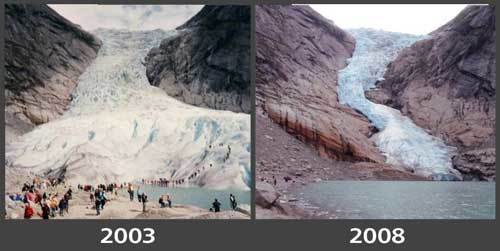
The accompanying picture of the Briksdal glacier in Norway (taken in 2003 and then again in 2008) is a perfect illustration of how climate change is contributing to the recession of glaciers worldwide.
5) Snow Cover
Over the last five decades, a decrease in snow cover has been observed over the Northern Hemisphere. This is especially evident during the springtime (March and April).
Not only is the overall snow cover less, but it also started to melt earlier in recent years than it did during previous years. The most rapid declines were observed during June each year.
This is very significant, as a third of the world is covered in snow for parts of the year. As the white-colored snow reflects the sun's radiation away from the planet's surface, it shielded the surface from being heated by the sun.
With less snow present to reflect the heat away, larger areas of the surface are now exposed to absorb the heat, which contributes to global warming and accelerates climate change.
These are just five examples used to highlight the reality and impact of climate change.
Climate skeptics will still question whether climate change is as real and threatening as the scientific community makes it out to be.
The following trends are direct consequences of carbon dioxide buildup and, and as a result, climate change. This will help to reinforce the validity of climate change and the dangers associated with it.
c) Acid Rain Due To Carbon Dioxide Bonding
In the atmosphere, many gases and small dust and pollen particles bond with moisture in the clouds that falls to the ground as rain. Carbon dioxide is no different and also bonds with rain droplets in the air.
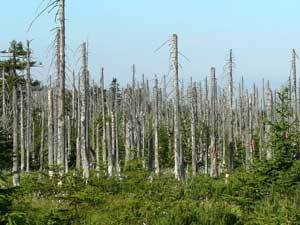
Effects of acid rain
The more CO₂ that is present in the air, the more acidic is the composition of the raindrops in a cloud system. Although this "acid rain" is not acidic enough to have any short-term effects, it has some serious and damaging long-term effects.
Acid rain is causing freshwater sources like dams and rivers to turn acidic, endangering the livelihood of fish species in it. Tree and plant life are also threatened as acid rain leaches aluminum from the soil.
The acid also removes vital nutrients and minerals from the soil, which are needed by plants and trees to grow and survive. As a result, it is not uncommon to see dying trees and plants in areas that are affected by acid rain.
d) Ocean Acidification Caused By Increased CO₂
By now, there shouldn't be any doubt left that a surplus of carbon dioxide exists in the atmosphere, and more are still being added by the burning of fossil fuels.
Its damaging effect through global warming is already seen on a worldwide scale. What makes it worse, though, is the fact that its presence is not just limited to the atmosphere.
A quarter of the CO₂ released in the atmosphere is absorbed by the planet's oceans. Over the last few decades, the addition of CO₂ is slowly changing the chemistry of seawater, which poses a serious problem. This process is called ocean acidification.
As the name suggests, carbon dioxide is making the water more acidic. This causes a variety of problems for certain fish species, like respiratory problems, compromised immune systems, and the depression of metabolic rates.
The acidic water also has a dramatic effect on coral reefs through a process called coral bleaching. The coral turns white and can completely die off. This is devastating for marine life using it as a habitat to live it in, as well as those using it as a source of food.
We as humans heavily rely on the oceans to provide us with a constant supply of food, so indirectly, this will have a long-term effect on us as well.
e) Increase In Extreme Weather Resulting From CO₂ Buildup
If you haven't been hiding under a rock lately, you will be well aware of how extreme weather events like hurricanes, cyclones, and tornadoes are increasing every year at an alarming rate.
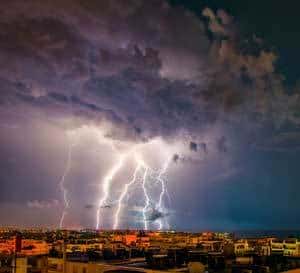
We already touched on this subject earlier in this article, but these events are such clear indicators of a climate shifting and changing direction at a rapid rate that they need to be emphasized again.
What may be even more alarming is the fact that carbon dioxide can cause extreme weather events without having to wait for the effects of global warming to start kicking in. This study was reported in the June 2018 issue of "Nature Climate Change."
In short, the assumption is that global warming occurs proportionally to the amount of carbon dioxide in the atmosphere. During the study, however, it was discovered that releasing a high amount of carbon dioxide caused an immediate spike in extreme heat in the specific area.
This means carbon dioxide triggers extreme weather either directly or indirectly through the effects of global warming.
f) Carbon Dioxide Responsible For Less Cloud Formation
Yes, you did read this heading right. More conclusive proof is being presented to indicate that an increase in carbon dioxide levels can be linked to a reduction in cloud formation.
So far, no natural occurrences or evidence of high levels of CO₂ breaking up clouds have been observed. This is a theory that was successfully tested by researchers from Caltech by running simulations on a supercomputer.
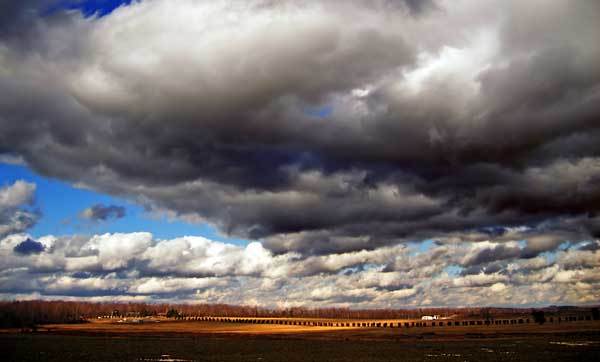
Stratocumulus Clouds
Lead scientist, Tapio Schneider, theorized that high enough concentrations of carbon dioxide could break up stratocumulus clouds. As I already stated, this hypothesis was successfully proven in theory.
Although this is still just a (proven) theory, it has potentially huge implications for cloud formation in the future as carbon dioxide levels continue to rise. Only time will tell...
We really ventured far and wide, and sometimes strayed far away from the main topic of carbon dioxide. But if you look carefully, you will see that carbon dioxide is closely involved, either directly or indirectly, in each and every topic discussed in this article.
We just spend an enormous amount of time looking at all the ways carbon dioxide is involved and affects our climate, weather, and environment.
It will be incomplete and irresponsible not to spend just one section to look at carbon dioxide and its affect on human health directly.
Effects Of Carbon Dioxide On Human Health
Carbon dioxide is a naturally occurring gas which, at normal levels, is necessary for maintaining life on earth.
The emphasis here is normal levels. Just as is the case with the climate and environment, CO₂ becomes dangerous and unhealthy to humans once it starts building up and becomes more concentrated, reaching toxic levels.
This can lead to serious health complications. One of the first signs of high levels of CO₂ is respiratory problems, starting with difficulty in breathing. Other symptoms include dizziness, headaches, sweating, and an increased heart rate.
More serious conditions are characterized by convulsions, asphyxia, and being comatose.
Carbon dioxide poisoning is probably one of the most serious conditions as a result of too much CO₂ in the bloodstream. This is a very serious condition that can be life-threatening and requires immediate emergency medical care.
This is not the place to try and provide any medical information. The purpose of this section is to make you aware of the dangers of high levels of carbon dioxide and how serious any symptoms should be taken.
Conclusion
This was a comprehensive article covering a variety of ways in which carbon dioxide contributes to global warming and climate change in direct and indirect ways.
It will be surprising if you don't feel a bit overwhelmed and confused by all the information. You may have to back and reread sections of the article you need to understand better.
To help you better make sense of the key points about carbon dioxide highlighted in this article, here is a summary of everything contained in this article in a few bullet points:
- Carbon dioxide, at normal levels, is a natural and safe gas that forms part of the earth's atmosphere.
- It is an essential gas necessary for the survival of plant and tree life, which produces carbohydrates which are necessary to sustain life on earth.
- Carbon dioxide levels are elevated and becoming highly concentrated through natural processes, but mainly as a result of human activities like the burning of fossil fuels.
- It is a greenhouse gas, which at elevated levels means it is blocking heat from escaping the atmosphere, contributing to global warming.
- Global warming is responsible for climate change which is considered by many to be the biggest danger faced by humankind.
- There is concrete evidence of global warming and climate change, from rising sea levels to extreme weather events.
- Carbon dioxide has been shown to play a role, direct and indirectly, in both global warming and climate change.
- CO₂ by itself is also dangerous to human health in elevated levels and high concentrations.
I hope this will help you get a better understanding of carbon dioxide, what it is, and the role it plays in global warming and climate change.
Never miss out again when another interesting and helpful article is released and stay updated, while also receiving helpful tips & information by simply clicking on this link .
Until next time, keep your eye on the weather!

